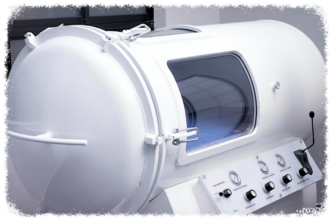WORDS LIM TECK CHOON
Hyperbaric oxygen therapy, or HBOT for short, has garnered attention for its potential benefits in various medical conditions, particularly in enhancing wound healing and treating specific infections.
HOW HBOT WORKS
- During a HBOT session, you’ll spend time in a clear plastic chamber called a hyperbaric oxygen therapy chamber. Each session can last anything from 1 to 2 hours, and you typically need a few sessions before seeing positive results.
- For chambers designed for one person, you will lie down on a table, which will then be slid into the chamber.
- For chambers designed to accommodate more than one person, you will either lie down or sit up, wearing a mask or hood to receive oxygen.
- Pure oxygen (100%) will be administered at pressures greater than 1 atmosphere absolute (ATA). A healthcare provider will be nearby to monitor your condition and make sure that everything is going well.
- This process increases the amount of oxygen dissolved in your blood plasma and improves delivery of oxygen to tissues that are damaged to increase the rate of healing.
- HBOT may also promote formation of new blood vessels, reduce inflammation, and enhance immune response against infections.
HBOT IS SAID TO BENEFIT PEOPLE EXPERIENCING THE FOLLOWING ISSUES
- Carbon monoxide poisoning. HBOT can quickly restore oxygen levels in the blood.
- HBOT can help in treating severe bacterial infection.
- Wounds, especially diabetic ulcers and other types of chronic wounds. HBOT can help stimulate growth of new blood vessels, improve appearance of scar tissue, and improve healing rate.
- Osteomyelitis, a chronic bone infection.
- Compromised skin grafts and flaps. HBOT can enhance the success rate of surgical grafts.
| At the time of writing, there is not enough research data to support other claims, such as HBOT being able to improve one’s autism or treat health issues not listed above. |
HOWEVER, HBOT MAY NOT BE SAFE OR APPROPRIATE FOR THE FOLLOWING GROUPS OF PEOPLE
- People with pneumothorax or collapsed lung.
- People with claustrophobia or fear of being in closed spaces.
- Pregnant women.
- People with existing lung problems.
- People that had recent ear injury or surgery.
DOES HBOT WORK? DO WE HAVE THE SCIENTIFIC EVIDENCE TO BACK UP THE CLAIMS?
- Research indicates that, for people with diabetes, HBOT can significantly enhance the healing process and reduce the risk of complications such as amputation.
- A systematic review highlighted its benefits in treating chronic wounds by improving oxygenation and stimulating healing processes.
However, we should also take note that the current available body of evidence is not uniform across all conditions.
More research is needed to evaluate the effectiveness of HBOT.
Because of this, HBOT is mostly considered by many healthcare professionals to be an adjunct therapy in wound care and certain medical emergencies, rather than a primary treatment option.
| In February 2025, Future Marketing Insights reported that HBOT devices market could hit USD 6.86 billion by 2033, due to rising demand of HBOT as an advanced wound healing solution. You can read the report here (link opens in a new tab). |
POTENTIAL SIDE EFFECTS OF HBOT
- Middle ear injuries
- Sinus congestion
- Temporary nearsightedness
- Oxygen poisoning
- Fainting and seizures
- People with diabetes may experience unstable blood glucose levels
| On February 1, 2025, it was reported that a 5-year old boy was killed when the HBOT chamber that he was placed in exploded. This is because the high amounts of pure oxygen inside a HBOT chamber made the environment inside very easy to catch fire. At the time of writing, the cause of this tragic accident is not known yet. However, it is a cautionary tale for us to seek HBOT at licensed centres that are staffed with qualified personnel well-equipped to handle emergencies. |
| This article is part of our series on the medical innovations. |
References:
- Lam, G., Fontaine, R., Ross, F. L., & Chiu, E. S. (2017). Hyperbaric oxygen therapy: Exploring the clinical evidence. Advances in skin & wound care, 30(4), 181–190. https://doi.org/10.1097/01.ASW.0000513089.75457.22
- Health Evidence Review Commission (HERC). (2014, November 13). Coverage guidance: Indications for hyperbaric oxygen therapy. State of Oregon. Retrieved August 17, 2024, from https://www.oregon.gov/oha/HPA/DSI-HERC/EvidenceBasedReports/Indications-for-HBOT.pdf














